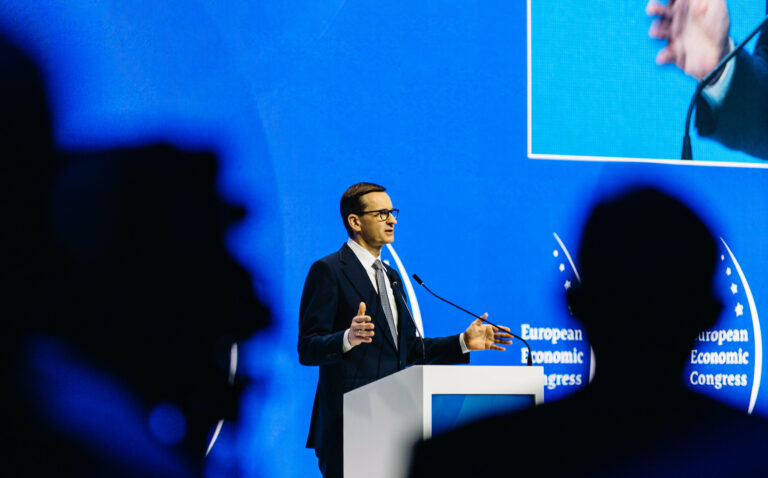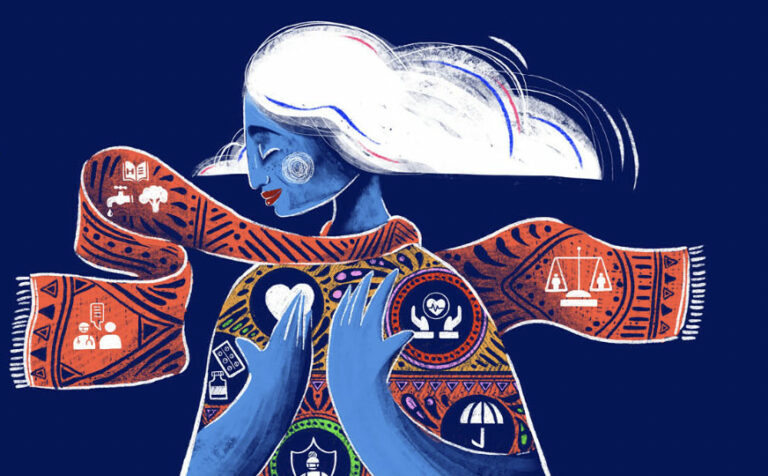
Blog: How does it feel to be half Crimean Tatar and half Ukrainian? This is Elina‘s identity
The regional identity of ‘Crimeans’ differs from that of ‘Crimean Tatars.’ The concept of Crimean identity is founded upon living on the Peninsula and belonging to the society shaped by the region, while the ‘Crimean Tatar identity’ implies belonging to the Turkic ethnic group, a Crimean indigenous people.
For Elina, who feels she cannot live in her homeland due to russian¹ occupation, Crimea becomes an experience lived vicariously through her mother, a Crimean Tatar, who continues to reside there. Elina’s experience is similar to that of her grandmother, who as a result of deportation, only knew Crimea through her family’s recollections up until her return to the Peninsula.
Elina (who goes by the pseudonym ‘Lina from Crimea’) is half Crimean Tatar and half Ukrainian. She lived in Crimea until 2016, and after finishing school, enrolled at a university in russia. But she has been living in Kyiv for several years now: “Until the age of 18, I had no real understanding of the cultural challenges faced by minority ethnic groups in the area. I like to think I am better informed today, and I have made a conscious decision here”. In 2020, she switched from russian to the Ukrainian language and is currently learning Crimean Tatar.
When I asked Elina about her first association with Crimea, it was her family that she mentioned. The next thing was a flashback – a lot of houses under construction. They belong to Crimean Tatars who returned from deportation in the 1990s and 2000s. The vast majority of the returning Tatars built their houses from scratch. That’s why one of Elina’s friends calls their age group the “Coquina generation,” courtesy of the sedimentary rock that was widely used in the houses’ construction.
Having been deported from Crimea under Stalin, Elina’s grandparents met and married in Uzbekistan. But their life purpose was to return home, which they did even before the authorities gave official permission. “They paid a bribe to have it written in their passports that they were Uzbeks, not Crimean Tatars, and were, therefore, able to return in the 1970s.” The fact that people had to pretend to be someone else just to survive at home illustrates the discriminatory nature of Soviet domestic policy.
The last time Elina was in Crimea to visit her family was in 2021: “I had the impression that my whole life until the age of 18 had been torn apart and violated…To see posters of the communist party of the russian federation in places that I associate with my childhood, to see a placard with putin not far from my favourite embankment, is disgusting,” she added. The implementation of russkiy mir2 is explicitly geared towards erasing the memories of yesterday’s Crimea, which is in turn replaced by russian propaganda promulgating its own version of events, telling people who they ‘really are’.
How can Elina’s family avoid this? Are there any chances for them to leave? “Regardless of the [russification of the region and social injustice that Crimean Tatars continue to suffer], suggesting for my mother to come to live in mainland Ukraine would be morally reprehensible, given the lengths her parents went to in order to return.”
Elina noted that she began to realise the tragedy of her people starting from the side of the Ukrainians. After she became fully aware of what they went through, she started to investigate the past of the Crimean Tatar people.
Analysing her life in Crimea, Elina remarks, “If you consider the influence of Ukrainian culture and Crimean Tatar culture in my life, it is clear that there was more of the Ukrainian culture.” For instance, Elina studied in an experimental Ukrainian class. This implies that for that particular group of students, all subjects were taught in Ukrainian. Their group had only 10 students. This is three times less than it was in classrooms where subjects were taught in russian.
Elina characterises the representation of Ukrainian culture in Crimea back in time as “very insufficient”, and “constructed from the viewpoint of the russian context.” She also mentions that Ukrainians were associated with the image of a “small and silly brother” who needs to be taken care of, as well as the image of a “ridiculous fool from the village” who is only interested in eating and drinking.
If such stereotypes are built about a certain culture, then how does the process of identification with it occur? This is how Elina describes the logic of her family’s Ukrainian self-identification: “We definitely feel that we are not russians. Perhaps if we aren’t russians, then we are Ukrainians; we live here, and our relatives are from Ukraine.”
What Elina is currently experiencing, as half Crimean Tatar and half Ukrainian, is a breach in the succession of generations – where experience, beliefs, and traditions are not passed down from generation to generation. I can assume that this feeling has a dual nature since it can be seen externally as a result of russian presence in Crimea and internally within herself due to Elina’s impression that she is “not Crimean Tatar enough”.
What is the origin and nature of this feeling? Elina notes that when she was a child, her mother felt a desire to pass on the Crimean Tatar culture. So she taught Elina a prayer and some simple words in the Crimean Tatar language. However, in the years that followed, there were no other lessons of this kind. “I think that my mother […] decided there were no prospects in the Crimean Tatar culture”, she adds, “but I understand that there is a conflict inside her.” What does this ‘lack of prospects’ mean? Education taught in Crimean Tatar only affords academic rights within Crimea. Those who study in Crimean Tatar do not have access to the same opportunities as graduates who studied in the cities of the Ukrainian mainland, for example, where the majority of resources are concentrated. Speaking Crimean Tatar was therefore seen as a disadvantage.
However, many times during the interview, Elina expressed her regret that she was not taught Crimean Tatar. She recalls feeling awkward as a child when her mother and relatives spoke Crimean Tatar, as she couldn’t understand them. “Did I feel indignant that my mother excluded me from this context? – Maybe”, she admitted. She adds that this childhood experience is now accompanied by a feeling of being excluded as a member of the community.
Elina describes Crimean Tatars as kind and loving people who care for their neighbour’s children as if they were their own. She adds, “I love that even if something is lost individually, it exists on a collective level.” So, even if your family doesn’t cook baklava, you can still taste it at your neighbour’s.
However, the russification of the region does influence people’s perception of themselves. So, as my interviewee noted, “In Crimea, it is natural that students named, for example, Nastia and Zarema3 sit at the same desk at school.” But at the same time, there are people who say it would be better if Crimean Tatars had stayed in the countries to which they were deported. The russian language is now more widely used among the Crimean Tatars. Moreover, some people alter their names and don’t mention they are celebrating Muslim holidays so as not to stand out. Thus, the constant adjustment and change of who you are become a repeated pattern among the Crimean Tatars in order to survive in their home.
Elina still remembers the distinctive voice of the muezzin in her neighbourhood of Crimea when he calls the faithful to prayer. But she knows that when he passes away, she will not hear the new muezzin’s call to prayer for the first time. Due to the russian occupation, she won’t be able to witness the moment, which marks a new beginning for all the members of her community, another breach in the succession of experience.
Elina said she would like to come home after the liberation of Crimea, even though she knows that seeing what happened to Crimea will hurt her. Nowadays, she often goes to the Crimean Tatar café in Kyiv to see the faces she used to see at home and hear the language she does not know but is used to hearing.
Thus, Сrimea is not just a ‘controversial topic’, and it’s not just sea and mountains. Even from a distance, Crimea remains part of the Crimean Tatars’ identity and the home they fight for.
________________________________________________________________________
Notes:
1 The author has chosen not to capitalise on the country “russia” or its adjective “russian” as a way of showing support for Ukraine through written language. The atrocities committed by the russian regime and its supporters call for its non-recognition and isolation from the international community; hence, the symbolic choice to use an uncapitalised “r”.
2 russkiy mir – ideological and geopolitical concept regarding the foundations of the existence and development of russian society.
3 Nastia and Zarema – names the interviewee uses to illustrate that in Crimea it is typical for children of different ethnic origins to sit together. This phrase shows the ethnic diversity of Crimea. Nastia is a variant of the name ‘Anastasia,’ a typical name for Ukrainians and some other Slavic nations, while the name Zarema is popular among Crimean Tatars.
The text’s author (Elina Pokotylo) and the interviewee Elina (who also goes by the pseudonym ‘Lina from Crimea’) are not the same people. The last name of the interviewee cannot be disclosed due to security reasons.
Author: Elina Pokotylo (YEA from Ukraine)
Peer-reviewed by: Vuzkyi Kyryl (YEA from Ukraine), Anna Romanovska (YEA from EU/UK)
This blog post was produced in collaboration with the Dialogue Initiative EU-Ukraine Working Group’s ‘Crimean History and Culture’ series
LATEST

How you can help the planet every day

Building Europe: Poland’s experience of joining the European Union and lessons for Ukraine

World Health Day 2024: My Health, My Right

EUREKA MEETS EUROPE – opportunities to develop and study. My experience

Can you wear pink in the workplace?
More campaign pages:
Interested in the latest news and opportunities?
This website is managed by the EU-funded Regional Communication Programme for the Eastern Neighbourhood ('EU NEIGHBOURS east’), which complements and supports the communication of the Delegations of the European Union in the Eastern partner countries, and works under the guidance of the European Commission’s Directorate-General for Neighbourhood Policy and Enlargement Negotiations, and the European External Action Service. EU NEIGHBOURS east is implemented by a GOPA PACE-led consortium. It is part of the larger Neighbourhood Communication Programme (2020-2024) for the EU's Eastern and Southern Neighbourhood, which also includes 'EU NEIGHBOURS south’ project that runs the EU Neighbours portal.

The information on this site is subject to a Disclaimer and Protection of personal data. © European Union,